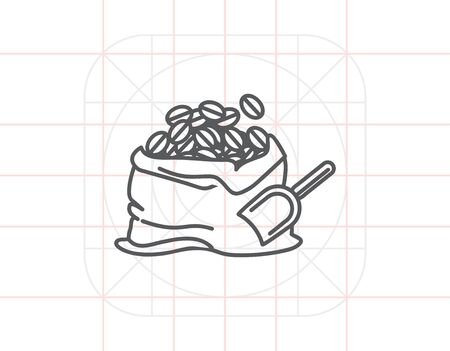1. Gather Your Supplies
Before you start your tea leaf reading at home, it’s important to have all the right supplies ready. Creating the right environment and having the proper tools will help you get the most out of your experience. Here’s what you’ll need:
Essential Supplies for Tea Leaf Reading
| Item | Description | Tips for Choosing |
|---|---|---|
| Loose Leaf Tea | Whole leaves are best for clear patterns. | Select a black or green tea without added flavorings or pieces. |
| Mug or Teacup | A wide, light-colored cup helps you see the leaves. | Pick your favorite mug, but make sure it’s not too deep. |
| Kettle & Water | You’ll need hot water to brew the tea. | Filtered water brings out the best flavor. |
| Spoon (optional) | For stirring and removing excess leaves if needed. | A regular teaspoon works great. |
| Notebook & Pen | To jot down impressions and symbols you see. | Any journal or notepad will do! |
Create the Perfect Ambiance
The atmosphere can make your tea leaf reading more enjoyable and insightful. Try dimming the lights, lighting a candle, or playing some calming background music. Pick a quiet spot where you won’t be interrupted, and maybe bring a cozy blanket or cushion to help you relax fully.
Checklist for Setting Up Your Space
- A clean table or countertop
- Your chosen mug and loose leaf tea set out
- Candle or soft lighting for ambiance
- A comfortable chair or pillow to sit on
- Your notebook and pen nearby
Tip: Make It Personal!
This is your special moment—feel free to include any personal items that help you feel calm and focused, like crystals, a favorite photo, or even a playlist of soothing tunes. Getting everything ready before you begin allows you to focus on the ritual of tea leaf reading itself.
2. Prepare and Enjoy Your Tea
Brewing the Perfect Cup of Loose Leaf Tea
For a meaningful tea leaf reading, start by brewing a fresh cup of loose leaf tea. Loose leaves are essential because they leave readable patterns at the bottom of your cup. Here’s a simple guide to get started:
| Step | Description |
|---|---|
| Choose Your Tea | Select a caffeine-free loose leaf black or green tea for traditional readings, or use herbal blends if you prefer. |
| Boil Water | Heat water to just below boiling (about 200°F for black tea, 175°F for green tea). |
| Add Leaves | Scoop about one teaspoon of loose leaves into your favorite cup or mug. No strainer needed! |
| Pour and Steep | Pour hot water over the leaves and let steep for 3-5 minutes to bring out flavor and open up the leaves. |
| Remove Excess Leaves (Optional) | If you have too many leaves, gently spoon out some, leaving enough at the bottom for reading patterns. |
Setting Your Intention Before Sipping
Before you take your first sip, take a moment to set an intention or ask a question you want insight on. This step helps focus your mind and energy, making the reading more personal and relevant.
- Hold your cup in both hands.
- Close your eyes and take a deep breath.
- Think about what guidance or message you hope to receive from your reading.
- You can ask a specific question or simply invite general insight into your life.
Mindful Sipping: Creating Space for Insight
Sip your tea slowly and mindfully. Pay attention to each taste and sensation. This mindful approach helps calm your thoughts and connects you with the present moment—an important part of tea leaf reading tradition in American homes. When you near the bottom of your cup, leave about a teaspoon of liquid along with the remaining tea leaves; this will allow the patterns to form clearly for interpretation in the next step.

3. Swirl and Drain
Now that youve enjoyed your cup of tea, its time to prepare the leaves for reading. This step is essential because how you swirl and drain the tea cup sets the stage for a clear and meaningful tea leaf reading.
How to Swirl Your Tea Cup
Hold your nearly empty cup in your hand. Gently swirl it three times in a clockwise direction. This movement helps spread the tea leaves around the sides and bottom of the cup, making distinct patterns that youll interpret later.
Swirling Tips
| Step | Tip |
|---|---|
| 1. Hold the Handle | Grip the handle firmly so you have control over the movement. |
| 2. Swirl Gently | A gentle swirl prevents leaves from bunching up or sticking together. |
| 3. Three Times Only | Traditionally, three swirls are best for creating readable patterns. |
Draining Your Tea Cup
After swirling, place a small saucer or plate over the top of your cup. Carefully flip both upside down to allow any remaining liquid to drain out while keeping the leaves inside the cup. Wait about one minute, then turn your cup upright again.
Why Draining Matters
- Removes excess liquid for easier leaf interpretation
- Keeps leaves stuck in place to form visible shapes and symbols
- Makes sure your reading isn’t too messy or wet
This traditional swirling and draining process creates clear patterns with the tea leaves, setting a strong foundation for your tea leaf reading experience at home.
4. Interpret the Patterns
Now that you have swirled and revealed the tea leaves at the bottom of your cup, it’s time for the most exciting part—interpreting the patterns! In American tea leaf reading, also known as tasseography, there are some common shapes and symbols that many people look for. Here are simple steps and tips to help you discover the messages in your cup.
Look for Recognizable Shapes
Hold your teacup at eye level and slowly rotate it. Let your imagination guide you—do any shapes or figures stand out? Don’t worry about being perfect; it’s all about what you see first. Sometimes a shape will jump out immediately, other times you might need to look a little longer.
Common Symbols and Their Meanings
The symbols below are often seen during readings in the U.S., each carrying its own meaning. If you spot one of these, use the table as a quick reference guide!
| Symbol | Possible Meaning (American Context) |
|---|---|
| Heart | Love, friendship, or good relationships on the horizon |
| Star | Success, recognition, or good luck coming your way |
| Dog | Loyalty, trustworthy friends, or support from someone close |
| Bird | News arriving soon or communication with someone important |
| House | Family matters, stability, or changes in your home life |
| Tree | Personal growth, health improvements, or strong family ties |
| Snake | A warning of possible deceit or someone untrustworthy around you |
| Dollar Sign ($) | A positive sign for financial matters or new opportunities to earn money |
| Circle | A completed cycle, fulfillment, or something coming full circle in your life |
| Arrow | A clear direction forward or an important decision ahead |
Tune Into Your Intuition
If a shape reminds you of something personal—maybe a childhood pet or a favorite place—trust your gut feeling! American tea leaf reading often blends intuition with traditional meanings. There’s no single “right” answer; what matters most is what the symbol means to you right now.
Tips for Beginners
- If you’re not sure what a shape means, jot down your first impressions in a notebook.
- You can search for more symbols online if something unique pops up.
- If reading with friends or family, compare what each person sees—you might be surprised by different perspectives!
- Don’t rush. Take a few minutes to sit quietly and reflect on how the patterns connect to your current life situation.
The more you practice interpreting tea leaf patterns, the easier it will get. Use this step-by-step approach and have fun exploring the hidden messages in every cup!
5. Reflect and Record
After finishing your tea leaf reading, take a moment to reflect on what you’ve seen in your cup. This is your chance to make the experience personal and meaningful! Think about the symbols or shapes that stood out to you. How did those images connect with your current life or feelings? Don’t worry about getting everything “right”—it’s all about your own interpretation.
Why Reflection Matters
Reflecting helps you notice patterns, emotions, or ideas that might otherwise slip by. It also makes your tea leaf reading more memorable and enjoyable, turning it into a tradition you can look forward to.
How to Record Your Insights
Grab a notebook or use your phone to jot down what you saw and what it made you think or feel. This way, you’ll have a record for future readings. Plus, looking back at your notes can show how your interpretations grow over time!
| Step | What to Do | Example |
|---|---|---|
| Describe Shapes/Symbols | Write down what images stood out | A heart near the rim of the cup |
| Your Feelings/Thoughts | Note any emotions or ideas these images sparked | Felt hopeful about relationships |
| Possible Meanings | List potential interpretations based on your life right now | Maybe new friendship or romance coming up |
| Date & Time | Add when you did the reading for easy tracking later | June 10, 2024 – Sunday morning |
Tips for Making It Fun and Memorable:
- Use colorful pens or stickers in your journal.
- Create a special playlist for your tea time sessions.
- Snap a photo of your cup before cleaning it out and add it to your notes.
- If you do readings with friends, compare notes and share insights together.
This simple step not only deepens your connection with the tradition but also turns every tea leaf reading into a creative experience you’ll want to revisit.


